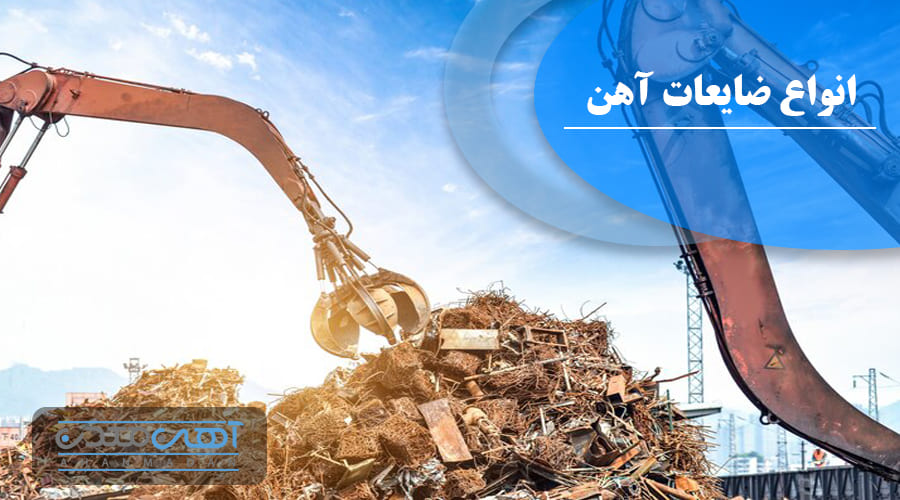Iron recycling and its benefits
Iron recycling is one of the important and economical methods in the steel and iron industry. In this process, ferrous waste materials, including metal scrap, are recycled and converted into new products. One of the key steps in iron recycling is the production of iron pellets.
By using iron pellets in the recycling process, greater productivity can be achieved and existing resources can be used optimally. This also helps to protect the environment and reduce production costs.
Recycling iron scrap has several advantages and risks. We will examine these two aspects below:
Table of contents
Benefits of iron recycling
Job creation: The recycling industry can create new job opportunities and help the local economy
Reducing waste volume: Recycling scrap iron helps reduce the volume of industrial and household waste and reduces landfill space
Reduce the consumption of natural resources: Recycling helps reduce the need to extract and process new minerals, which saves natural resources
Energy savings: Iron recycling typically requires less energy than producing iron from ore. This helps reduce production costs and greenhouse gas emissions
Reduced environmental pollution: The recycling process usually produces less pollution than the extraction of new raw materials, especially in the areas of climate and air
The dangers of recycling iron
Unstable prices: Fluctuations in the global market for recycled iron can have negative economic impacts on the recycling industry
Lack of infrastructure: In some areas, the lack of adequate infrastructure for collecting and processing iron scrap can prevent the optimal exploitation of this resource
Worker Safety: Working in iron recycling plants can pose risks such as physical injuries from machinery, hot materials, as well as inhalation of dust containing heavy metals
Changes in material quality: If iron scrap is not properly segregated and processed, the quality of the final products may be affected, causing problems, especially in steel production
Pollution: If the recycling process is not managed properly, it may lead to soil and water pollution. In particular, the presence of heavy metals and other hazardous substances in the waste can pose environmental risks
Given these benefits and risks, effective and sustainable management of iron recycling is of great importance to exploit its benefits and reduce risks.
?What is iron scrap
Scrap iron refers to materials that are obtained as a result of the processes of production, manufacture, or use of iron and steel products and are no longer usable or are considered waste. This waste can include a variety of materials.

Types of waste
1. Industrial waste:
Production waste: This type of waste is generated during the iron and steel production process, such as cuttings and scraps from forming.
Machinery waste: Damaged or unusable parts of industrial machinery.
2. Construction waste:
Construction waste: Such as excess rebar, iron sheets, and damaged beams.
Demolition waste: Iron and steel left over from the demolition of buildings and structures.
3. Household waste:
Household items: Old household items such as electrical appliances, metal furniture, and other iron items that are no longer used.
4. Automobile waste:
Automobile iron parts: Such as car bodies, wheels, and other iron parts obtained during repair or breakdown.
The importance of recycling scrap iron
Iron scrap is considered a valuable resource for recycling. Recycling this waste reduces the need for ore mining, saves energy, and reduces environmental pollution. By converting iron scrap into new raw materials, it can contribute to sustainable development and use natural resources optimally.
Iron scrap recycling involves several main steps that help convert these materials into new products and reuse them. The following are the main steps of iron scrap recycling:
Iron scrap recycling involves several main steps that help convert these materials into new products and reuse them. The following are the main steps of iron scrap recycling:
1. Waste collection
Primary collection: Iron scrap is collected from various sources including factories, construction, and household waste.
Segregation: Iron scrap is separated from other waste materials to prevent them from mixing.
2. Separation and segregation
Separation equipment: Various equipment such as magnets are used to separate iron from other metals and materials.
Manual separation: In some cases, workers also separate the scrap manually.
3. Crushing
Shredding of scrap: Iron scrap is crushed to reduce its size and make it easier to work with. This is usually done using crushing machines.
4. Melting
Smelting in a furnace: The crushed scrap is placed in a melting furnace. Electric arc furnaces or induction furnaces are usually used.
Temperature control: The temperature is adjusted so that the iron melts and impurities are separated from it.
5. Refining
Refining the melt: In this step, the impurities present in the molten iron are removed. This may include the addition of chemicals that help separate out impurities.
6. Casting and shaping
Casting molten iron: Molten iron is poured into molds to take the desired shape. These molds can be made into various shapes, such as ingots or pellets.
Cooling: The cast iron is cooled to its final shape.
7. Production of finished products
Use in production: Recycled products are re-entered into the steel and iron industry and used as raw materials to produce new steel.
8. Distribution and sales
Distribution: Recycled products are distributed to various factories and industries.
Marketing: Recycled iron scrap is marketed and offered to other producers of raw materials.
Recycling iron scrap not only helps conserve natural resources, but also has a positive impact on the environment, helping to reduce pollution and energy consumption.
Industries that produce large amounts of metal scrap
Energy industry
Recycling industry
Packaging industry
Electronics industry
Agricultural industry
Automotive industry
Construction industry
Steel and iron industry
Petrochemical industry
Industrial machinery and equipment industry
Conclusion
In summary, recycling of iron scrap not only helps to preserve the environment, but also adds value to the economic cycle. Effective and sustainable management in this field is very important to achieve high productivity and reduce environmental risks.
Recycling is a vital process in the steel and iron industry that helps to preserve natural resources and reduce environmental pollution. Ahan Madan Company, considering modern and sustainable approaches in this field, produces and recycles high-quality iron and steel and contributes to the local and global economy. Finally, by focusing on recycling and reusing iron scrap, Ahan Madan Company contributes to sustainable development and environmental protection, while also providing economic opportunities.
Communication bridges
Time table
Providing an official invoice
Shipping to all locations
Best price guarantee
Check sale
Taban Asia Steel Company, under the brand name of Ahan Madan, is a consortium of long-standing players in the steel industry, which, relying on the technical and specialized power and years of experience of the steel veterans working in these companies, works in the direction of meeting the needs of customers and their conscious purchase from the Iranian steel market. does Relying on our hardware support, such as a warehouse with an area of ten thousand square meters with a covered hall, supplying and trading all steel sections, providing valid certificates to guarantee the quality of products, support services until the moment of delivery, and also providing special services for the country’s manufacturing industries on an exclusive basis. , is trying to create a safe environment for consumers.
- All material and intellectual rights are reserved for this site
- Design and SEO of Taban Asia Steel Company





